Tefillin
Peer Hastam is a major Israeli Tefillin manufacturer, selling to more than one hundred stores and distributers in Israel and worldwide. Each set of Pe'er Hastam Tefillin are Kosher with certification and of high caliber and come with quality plastic covers, and have leather straps (retzuot) tied as per your request.
-
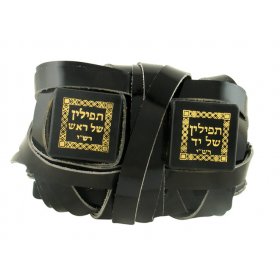 Ashkenazi Tefillin Gassot Ktav Beit YossefMade in Israel by "Peer Hastam"$634.17 - $795.23
Ashkenazi Tefillin Gassot Ktav Beit YossefMade in Israel by "Peer Hastam"$634.17 - $795.23 -
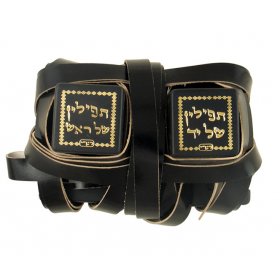 Sephardi Basic Tefillin Peshutim$201.42
Sephardi Basic Tefillin Peshutim$201.42 -
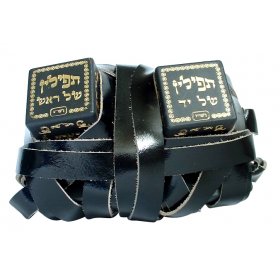 Ashkenazi Tefillin Peshutim MehudarimMade in Israel by "Peer Hastam"$265.44
Ashkenazi Tefillin Peshutim MehudarimMade in Israel by "Peer Hastam"$265.44 -
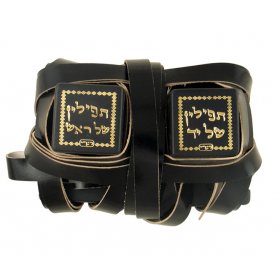 Ashkenazi Tefillin Peshutim$201.42
Ashkenazi Tefillin Peshutim$201.42 -
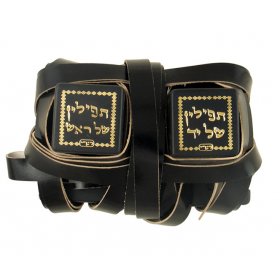 Ashkenazi Bar Mitzvah TefillinMade in Israel by "Peer Hastam"$263.43
Ashkenazi Bar Mitzvah TefillinMade in Israel by "Peer Hastam"$263.43 -
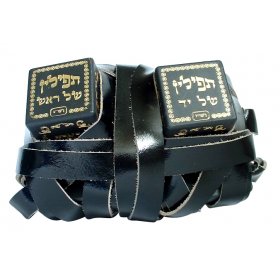 Sephardic Tefillin Peshutim MehudarimMade in Israel by "Peer Hastam"$265.44
Sephardic Tefillin Peshutim MehudarimMade in Israel by "Peer Hastam"$265.44 -
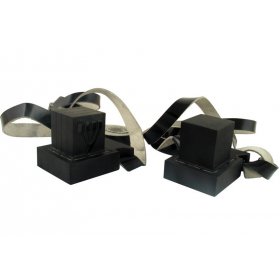 Ashkenaz Tefillin Dakkot Ohr Echad Arizal - Ktav AriMade in Israel by "Peer Hastam"$381.11
Ashkenaz Tefillin Dakkot Ohr Echad Arizal - Ktav AriMade in Israel by "Peer Hastam"$381.11 -
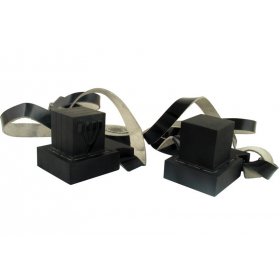 Ashkenazi Tefillin Dakkot - Nusach Chasidi Arizal-Ktav AriMade in Israel by "Peer Hastam"$334.35
Ashkenazi Tefillin Dakkot - Nusach Chasidi Arizal-Ktav AriMade in Israel by "Peer Hastam"$334.35 -
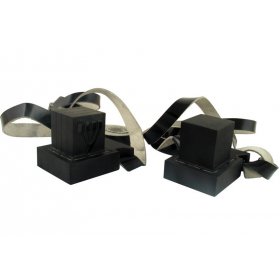 Ashkenaz Tefillin Dakkot Ohr Echad - Ktav Beit YosefMade in Israel by "Peer Hastam"$364.74
Ashkenaz Tefillin Dakkot Ohr Echad - Ktav Beit YosefMade in Israel by "Peer Hastam"$364.74 -
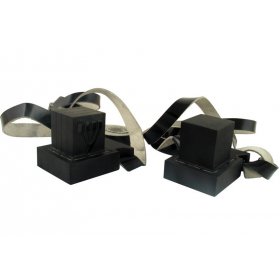 Ashkenazi Tefillin Dakkot - Nusach Beit YosefMade in Israel by "Peer Hastam"$339.02
Ashkenazi Tefillin Dakkot - Nusach Beit YosefMade in Israel by "Peer Hastam"$339.02 -
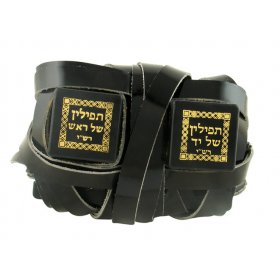 Tefillin Gassot Sephardic VersionMade in Israel by "Peer Hastam"$634.17 - $795.23
Tefillin Gassot Sephardic VersionMade in Israel by "Peer Hastam"$634.17 - $795.23 -
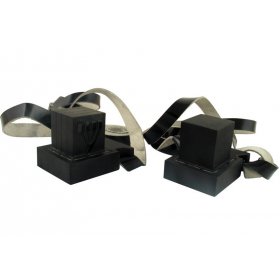 Nusach Sephard and Yemenite Dakkot TefillinMade in Israel by "Peer Hastam"$334.35
Nusach Sephard and Yemenite Dakkot TefillinMade in Israel by "Peer Hastam"$334.35 -
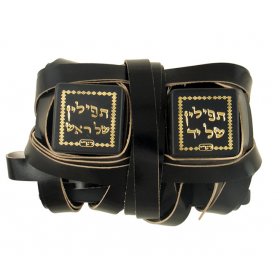 Sephardic Bar Mitzvah TefillinMade in Israel by "Peer Hastam"$263.43
Sephardic Bar Mitzvah TefillinMade in Israel by "Peer Hastam"$263.43 -
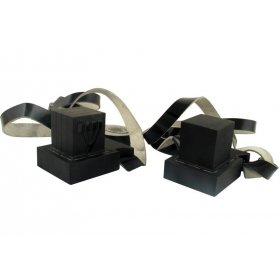 Sephardic Tefillin Dakkot - Ohr EchadMade in Israel by "Peer Hastam"$364.74
Sephardic Tefillin Dakkot - Ohr EchadMade in Israel by "Peer Hastam"$364.74 -
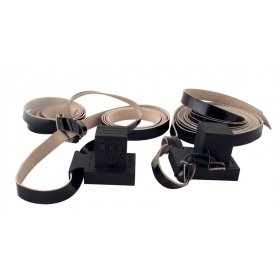 Large Ashkenaz Tefillin Peshutim MehudarimMade in Israel by "Peer Hastam"$286.72
Large Ashkenaz Tefillin Peshutim MehudarimMade in Israel by "Peer Hastam"$286.72 -
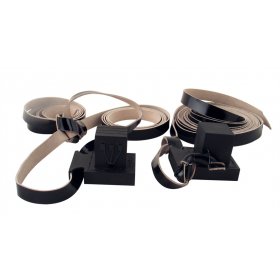 Large Sephardic Tefillin Peshutim MehudarimMade in Israel by "Peer Hastam"$286.72
Large Sephardic Tefillin Peshutim MehudarimMade in Israel by "Peer Hastam"$286.72 -
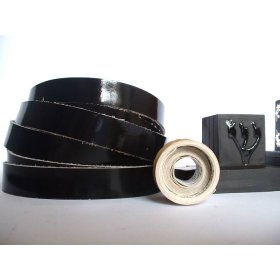 Chabad Lubavitch Tefillin GassotChabad Lubavitch special extra large Tefillin$1,107.29 - $1,308.61
Chabad Lubavitch Tefillin GassotChabad Lubavitch special extra large Tefillin$1,107.29 - $1,308.61 -
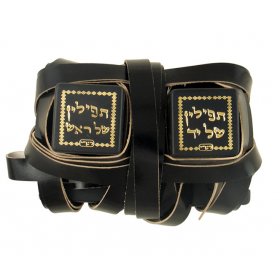 Premium Tefillin Gassot Ashkenazi Miksheh Level AHand Made in Israel - "Peer HaStam"$1,399.21
Premium Tefillin Gassot Ashkenazi Miksheh Level AHand Made in Israel - "Peer HaStam"$1,399.21 -
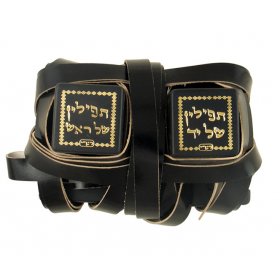 Premium Tefillin Gassot Sephardic Miksheh Level AHand Made in Israel - "Peer HaStam"$1,399.21
Premium Tefillin Gassot Sephardic Miksheh Level AHand Made in Israel - "Peer HaStam"$1,399.21 -
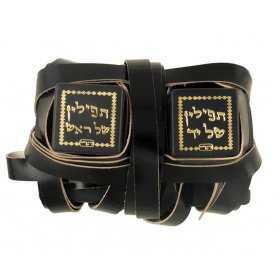 Tefillin Gassot Sephardic Miksheh Level BHand Made in Israel - "Peer HaStam"$1,107.29 - $996.56
Tefillin Gassot Sephardic Miksheh Level BHand Made in Israel - "Peer HaStam"$1,107.29 - $996.56 -
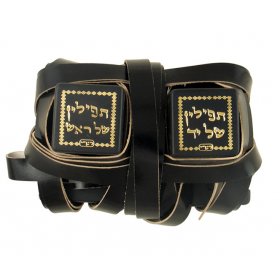 Tefillin Gassot Ashkenazi Miksheh Level BHand Made in Israel - "Peer HaStam"$1,107.29
Tefillin Gassot Ashkenazi Miksheh Level BHand Made in Israel - "Peer HaStam"$1,107.29
Kosher Tefillin Sets
Tefillin are known in English as Phylacteries. They are two small leather boxes that are attached to leather straps. Each of the two boxes contains sections of the Bible that are inscribed on parchment. The passages include the Shema prayer which pronounces the Unity of G-d, the concept of reward and punishment, the duty of the Jewish people to remember their redemption from Egyptian bondage and the obligation of every Jew to pass down these matters to his children.
Who Wears Tefillin?
Tefillin are worn by many Jewish men while at morning prayer and they consist of two black leather cubes (boxes). One of the cubes is placed on the forehead and is called "Shel Rosh". The second is worn on the upper left arm and is called "Shel Yad". The cubes have long straps of leather attached to them which enable the wearer to wrap the tefillin on his head and arm. The straps of the Shel Yad are wound seven times down the arm and three times down the middle finger. Within the cubes are four sections of the Bible written on parchment. These sections proclaim the existence and unity of God and recall the liberation of the Jews from Egypt. Once a man has had his Bar Mitzvah, he may wear the Tefillin during weekday prayers. Tefillin are not worn on the Sabbath or on Jewish holidays. The putting laying of tefillin is like a ceremony in itself, for as the man puts them on, he recites a prayer. The use of tefillin stems from the Biblical commandment: "And thou shalt bind them for a sign upon thy hand, and they shall be as frontlets between thine eyes" (Deut. 6:8).
Tefillin Types
Tefillin are the most complex of the scribes activities, not in the writing but in the construction of the batim (housings) themselves which have to be perfectly square and take great effort and craftsmanship. They vary in quality, in the way they are made, and in their halachic desirability.
There are four types:
Peshutim (Simple Ones) - These are made using several pieces of parchment to form the inner walls of the head tefillin, which glued within a slit square to divide it into the four required compartments. If the inserts are glued incorrectly then these batim are not kosher for use. The parshiyot inside commercially bought peshutim are generally of very poor quality, and often not valid for use.
Peshutim Mehudarim (Enhances Simple Ones) - These make the box of the tefillin out of a single piece as required. They are typically made with 32 mm sides to the boxes, which are quite small. However, goat skin is used to form lighter weight batim, which when finished look almost identical to the more expensive cowhide type, but are not as durable.
Dakkos (Thin Ones) - These are made by stretching a thin layer of parchment (klaf) over a structural base similar to the peshutim. This outer parchment forms the entire box of the tefillin, including the inner as well as the outer walls and also the base, which is halachically desirable. Its thinness, though, means that the tefillin can become halachically invalid relatively easily if knocked or through normal wear and tear.
Gasos (Thick Ones) - These are made altogether out of a single piece of thick leather (usually with inserts to ensure they close flat). This requires the repeated use of several tons of pressure in industrial presses as part of a complicated but delicate production. The resulting batim are so durable and thick that they can be renewed even if seriously damaged and they typically last a lifetime. Gassot are made with boxes varying in size from about 20 mm per side to over 40 mm, though sides of 31-36 mm are considered standard.
How Tefillin are made?
The choicest cow hide is used from the cheeks and the neck of the cow where it is the thickest. Thus only one pair of tefillin is produced for each head of cattle. After undergoing a softening process the leather is cut to the size needed and left to dry slowly in the open air for at least three months. The box shapes are then formed by applying considerable pressure and gradually the shape we are familar with starts to appear in the skin.
Each titura (cube), averaging 35 square mm in size, is sanded, squared perfectly, painted jet black with paint made from only kosher ingredients and measured, as many as twelve times. A lacquer finish provides wear resistant protection and a fine, faultless appearance which must be completely square or they are invalid for use.
On the head tefillin two shins, one with four heads protude. Once the parchments are placed inside in the specified manner, involving wrapping them in pieces of parchment and tying them loosely with calfs hair. The batim are sewn shut with giddin (sinew) from a kosher animal with one of the calfs hairs visible outside.
Finally, the leather retzuot (straps) which are black on one side and left plain are pushed through the maavarta (channel) and knotted according to the Ashkenazi or Sephardi custom.
Beit Ari vs. Beit Yosef scripts
One of the most honored professions in Jewish life is being a scribe or sofer. It has been the profession of many great men in Jewish history, most notable among them the great Ezra, who rebuilt rebuilding the Second Commonwealth and Temple. The scribe writes the Torah, the parchments inserted into the boxes of teffilin and the parchment inserted within the mezuzot affixed to the doorposts of Jewish homes and premises. Thus, a scribe is usually called a sofer STaM - the word stam being the acronym for Sefer torah, Teffilin and Mezuzot. There special computer driven programs that check the work of the sofer for accuracy and correctness.
The parchment used for a sefer torah, tefillin and mezuzot is also specially prepared and is derived from the hide of a kosher animal. The hide undergoes flattening, thinning and bleaching process to turn it into usable white parchment. There have been many instances of deerskin being used to make the parchment and those sifrei torah have a brown-colored background for the black lettering of the words of the Torah.
The scribe writes in a squarish script called in the Talmud ktav ashuri, "Assyrian script." Tradition assigns this script back to Moshe and Sinai. There are very strict halachic rules regarding the formation of each letter of the Hebrew alphabet, although there are a number of variant traditions.
The most common script is called Beit Yosef since it is the form prescribed by Rabbi Yosef Caro in the Shulchan Aruch - the primary work of Jewish law. However, the great kabbalist Rabbi Yitzchak Luria Ashkenazi promoted a script that differs slightly fromthis script in nine letters of the alphabet. This script is called Ktav Ari - Ari being the Hebrew acronym for Rabbi Yitzchak Luria.
Most Ashkenazi, non-Hassidic Jews, as well as most Sephardi Jews, use the Beit Yosef script, while most Hassidic and Kabbalistically-oriented Jewish communities use the Ktav Ari script. There is a third variation of ktav ashuri, called ktav vellish. This script was in use in medieval central Europe, especially Bohemia and also in certain Yemenite and Near Eastern communities. It does not enjoy wide popularity today.
Tagim and Scribe Skills
In addition to all of the above, the scribe must attach "crowns" (tagim) to the tops of seven letters of the Hebrew alphabet when writing a sefer torah. Being a scribe requires patience, good writing and artistic skills and immense powers of concentration.
No matter what variation of script is used, the scribe himself leaves his individualistic imprint on the parchment. No two scribes write exactly the same and people interested in purchasing a Torah or tefillin or mezuzot, naturally, search for a scribe whose calligraphy appeals to them.
Until the latter part of the 20th century, most scribes wrote in a bold and thick hand, so that the white background of the parchment was almost unnoticeable. However, over the past few decades, following the lead of scribes in Israel, the writing of the letters has taken on a much lighter, finer tone.
Where to buy Tefillin?
Our site is the perfect place to invest in a set of Tefillin for yourself or for your son's Bar Mitzvah. We offer extensive warranty policy and best value. Be sure to check out our Tallits, Tefillin bags and other accessories for the ultimate Bar Mitzvah gift.
